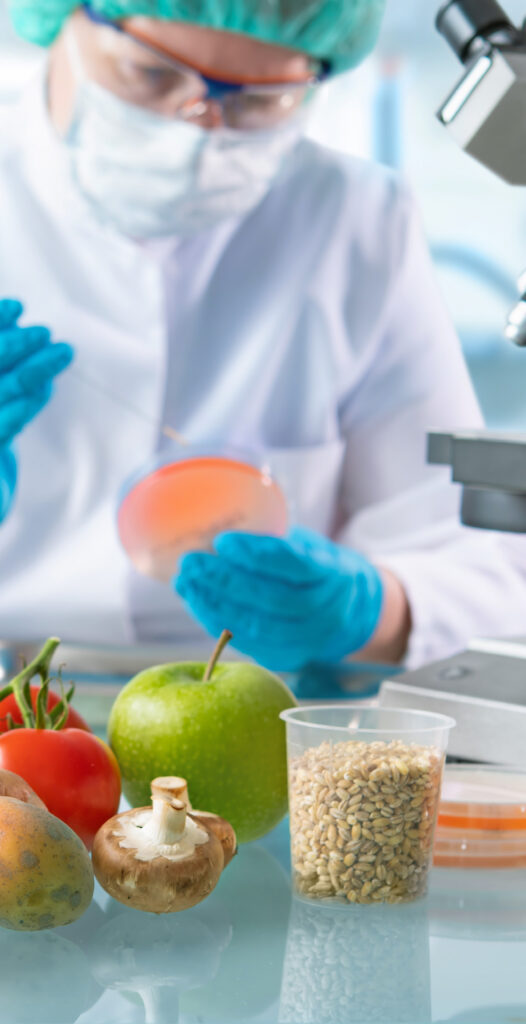Product Safety Rule
There are seven Major Rules under the Food Safety Modernization Act (FSMA) which aim to drive the industry from a reactive to a more proactive stance on control of food safety and human health. As we proceed through the Perigon / RQA factsheet series we will look at the Major Rules in turn in greater detail.
Produce Safety Rule
This article will look at the rule on improving produce safety.
Several recent, high profile recalls and public health incidents related to leafy greens and other Raw Agricultural Commodities (RACs) have driven the clear need for tighter control in this area which this rule and its associated controls seek to address.
Produce Safety Major Rule
“Produce safety rule – mandatory standards for growing, harvesting, packing, and holding of fresh produce. Including contamination protection requirements for water quality testing, raw manure application, examining grazing areas, employee health and hygiene training, and more.”
The Produce Safety rule is specifically aimed at reducing the risk of microbial contamination in fruits and vegetables. The rule applies to vegetables that are typically consumed raw – (RACs). It establishes science-based standards for the growing, harvesting, packing, and holding of such produce. This rule went into effect January 26, 2016.
Under this rule, farms must identify and evaluate potential hazards associated with their produce and implement measures to minimise the risks. They must also maintain certain, mandated records related to their food safety practices For example:
- Records of the application of biological soil amendments (such as compost or manure) that may come into contact with produce, including information about the source and treatment details.
- Records of equipment calibration and maintenance, particularly if the equipment is used for activities likewashing, sorting or packaging produce.
The Produce Safety rule also includes provisions for water quality, which is critical for reducing the risk of contamination in crops that are irrigated or come into contact with water during growing, harvesting, or packing. The rule establishes the minimum testing criteria for microbial water quality and requires that farmers test their water sources and take corrective actions where necessary. This could include identifying possible sources of contamination, cessation of use of water sources and control of potentially affected stock, additional testing or notification of relevant authorities.
Another key component of the Produce Safety rule are the requirements for worker health and hygiene. Farmers must establish and implement procedures for workers to follow to prevent the contamination of produce during harvesting and packing. These procedures must include requirements for hand hygiene, training, and reporting of illness to avoid or reduce any potential for cross-contamination.
The Produce Safety rule applies to all farms that grow, harvest, pack or hold fruits and vegetables that are typically consumed raw, with a few exemptions for farms that sell directly to consumers or have very low annual sales.
However, when looking at the total number of different products recalled versus the number of events, the output varies dramatically (as seen in the chart below). For example there was a notable jump up in products recalled in 2022, driven primarily by a small number of recall events involving a large number of salad products potentially contaminated with listeria.
Produce recall trends
Looking back through RQA Group sorted data for FDA recalls over the previous 5 years, fruit & veg related recalls have consistently been in the top 5 for number of products recalled. So far in 2023 it is the 3rd most recalled food category down from 2nd last year. Interestingly, the number of recall events involving fruit and vegetables remains relatively static over the years, shown in the charts below.


However, when looking at the total number of different products recalled versus the number of events, the output varies dramatically (as seen in the chart below). For example there was a notable jump up in products recalled in 2022, driven primarily by a small number of recall events involving a large number of salad products potentially contaminated with listeria.
A degree of lag, or indeed lack of impact of rulings and guidance on desired outputs is often seen within the FDA framework and may be applicable here looking at the lack of any clear downwards trend in recall numbers shown.
This major rule is overarching and is then further driven into practise by addition of more prescriptive, specialist supporting rules and guidance publications which aim to support reduction of this lag and deep dive into specific root cause issue management.
Associated Further FDA Guidance and Rules
Within the major rules, a number of other supporting rules give structure and continue to evolve and update in line with relevant, science-based data. For example, following the E. coli O157:H7 outbreaks associated with romaine lettuce in 2018 and 2019, the FDA has implemented additional measures to address the issue. In October 2011, the FDA released a draft guidance document entitled “Guidance for Industry: Evaluating the Safety of Flood-affected Food Crops for Human Consumption” which outlines recommended steps for farmers and processors to take to assess the safety of food crops in the aftermath of floods. This was published well before the FSMA rules and yet still major outbreak events have occurred therefore putting into context the need for this Major Rule to drive even deeper focus and scrutiny.
In addition, the FDA has proposed new rules to enhance traceability in the supply chain for certain fruits and vegetables that are considered high-risk for foodborne illness outbreaks, including leafy greens such as lettuce. These proposed rules would require certain entities in the supply chain to maintain records of the movement of these high-risk foods, in order to quickly identify the source of any outbreaks and prevent further contamination.
However, these are still at the proposal stage so are not yet mandatory pieces of legislation. The pace of introduction of these rules and supporting documents are perhaps indicative of the lag seen in any shift in the recall data spoken about earlier.
The National Association of State Departments of Agriculture (NASDA), in collaboration with the FDA, amongst others, has introduced the On-Farm Readiness Review (OFRR) program. It is a voluntary program that assists produce farmers in assessing their preparedness to comply with the Produce Safety Rule and offers tailored suggestions to enhance their operations and implement good practices.

Summary
The Produce Safety rule is one of the seven major rules under the Food Safety Modernization Act.
All rules aim to improve the safety of the U.S. food supply proactively by preventing contamination and reducing the risk of microbial contamination with an aim to improve food safety and human health in general.
RQA can assist with:
- Onsite Hazard Assessments
- Environmental Protocols
- Guidance to locate approved training as required by the Rule
- Training in all aspects of FSMA and food safety
Consultancy:
- Development and review of recall plans
- Food safety plans and related process reviews


